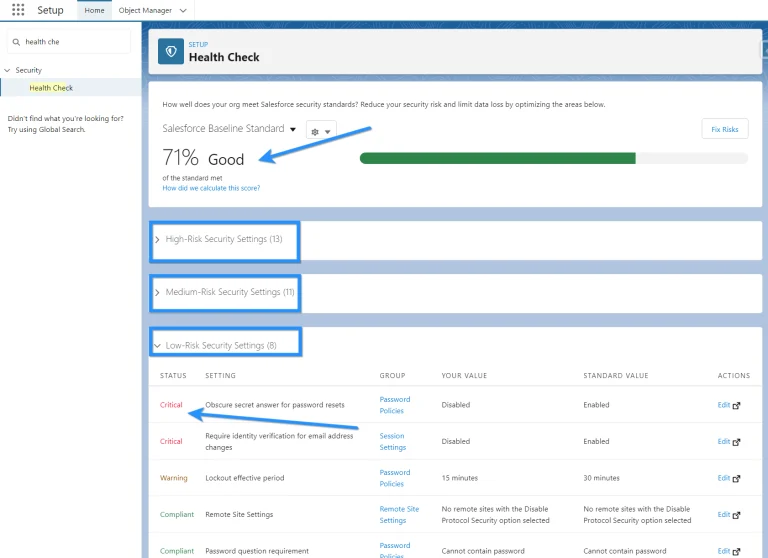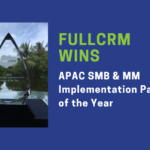Salesforce Winter ’24 is just around the corner, and it will soon be accessible in your instances.
Salesforce releases occur three times annually and are brimming with enhancements, fresh features, and expanded functionality. This is one of the perks of being a Salesforce customer, and we strongly urge all our clients to take full advantage of these updates to enhance their business operations and gain a competitive edge.
If you have any enquiries on how your business can harness any of these features, don’t hesitate to contact us; we will be more than happy to assist you.
The Fullcrm top 10 picks for Winter ’24:
1. Improve user engagement with tailored page layouts using dynamic forms for standard objects
Dynamic forms are customisable page layouts that adapt to user interactions and data, allowing you to control field visibility, and layout and create a more user-friendly experience.
From previous releases dynamic forms were only available on custom objects and selected standard objects. Now this functionality has been extended to support hundreds of LWC-enabled (Lighting Web Component enabled) standard objects.
Dynamic forms are not currently available on objects that do not support Lighting Web Components, such as Campaigns, Tasks and Products.
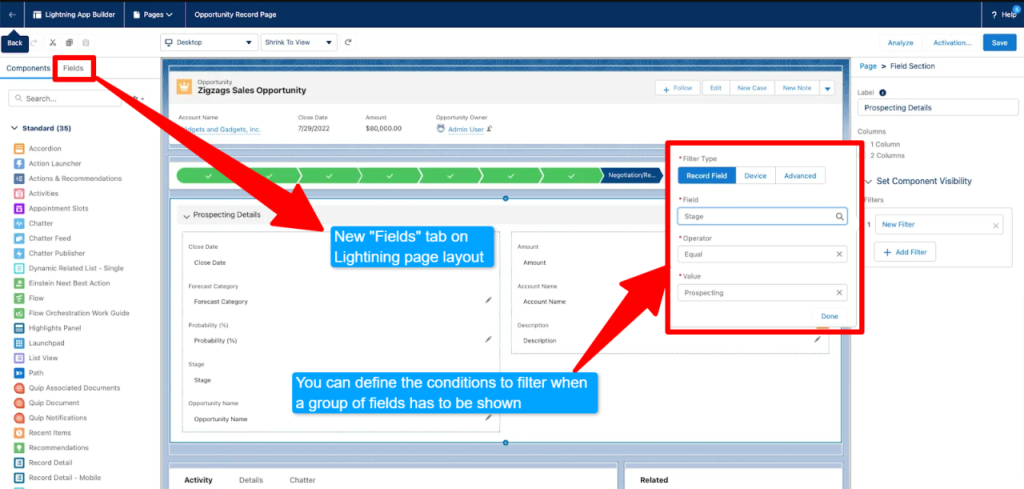
Dynamic forms will also be generally available to users of the Salesforce Mobile App. Search “Dynamic Forms on Mobile” to enable.

2. Streamlined dashboard management: save time and effort by transferring ownership
This might seem like a small change to dashboards but it will be a big time-saver for admins!
Previously there was no easy way of transferring the ownership of a dashboard, so when a user left your organisation the dashboard became no longer available. The only workaround was to clone and recreate the dashboard to the same specifications.
Now with the new release, it is possible to transfer the ownership of a dashboard to a new owner. Allocate the ownership of dashboards with the “View All Data” or “View My Team Dashboard” permissions plus edit access to the folder wherever the dashboard is located.
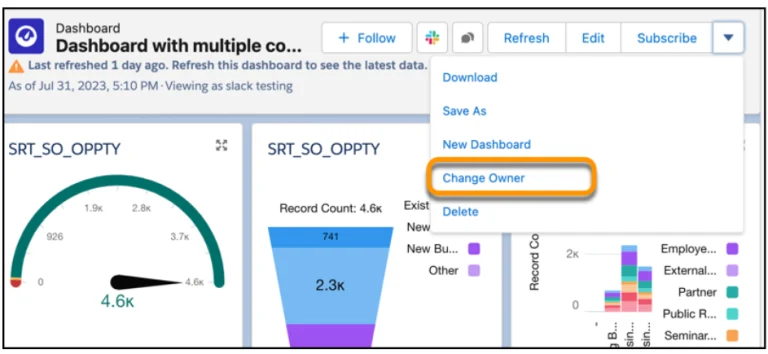
3. Record creation and mass updates made easy with mass Quick Actions on Related Lists
Another easy-to-implement update for admins that will boost user productivity!
Users can now create and mass update (up to 100) related records without leaving the page, by adding quick actions directly to related lists.
Add quick actions in one of two ways:
- From the Lightning App Builder: Select the Dynamic Related List and select “Show list view action bar” on the properties pane. Then click Add action.
- From the object management settings using the page layout editor: Open the related list properties, expand the buttons section and select the desired quick actions. Then, from the parent record page in the Lightning App Builder, set the related list type to Enhanced List.
Once enabled, use the quick actions (1) and apply them to the selected records (2).
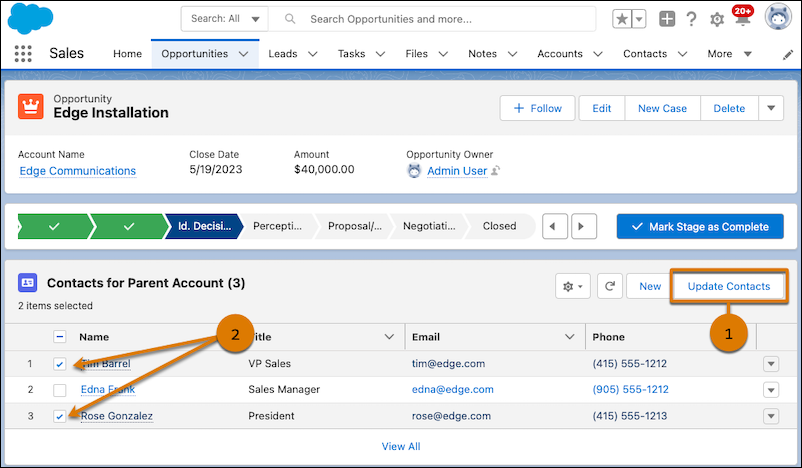
4. Get prepared with and promote best practice with Permission Sets
With Salesforce’s shift towards retiring profile-based permissions in the upcoming Spring ’26 release, numerous updates and improvements for permissions have now been made accessible and we expect more to be announced in the future.
If you have any inquiries or wish to explore planning strategies for this transition, please feel free to get in touch with us
Report on Custom Permission Set and Permission Set Group Assignment.
You can now generate a custom report type with Permission Set Assignment as the primary object.
With this report, admins can now easily view a list of all users who have been assigned to a custom Permission Set or Permission Set Group
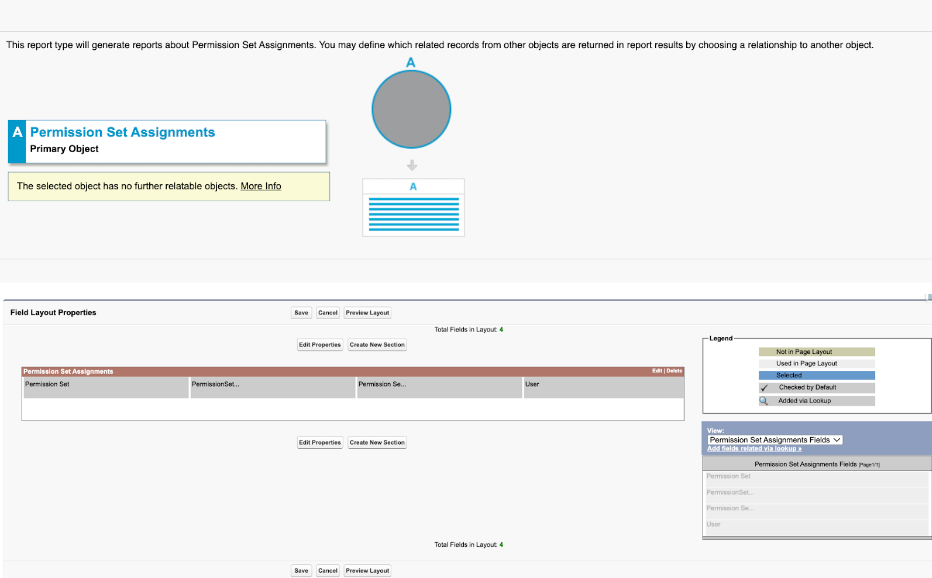
Troubleshoot Permission Set Group Errors
Keep track of errors when testing by displaying the most recent error messages on the details page. Save time by displaying the clear error indicator when troubleshooting Permission Set groups
Additionally, the recalculation of Permission Set Groups can now be triggered manually without needing to edit the group.
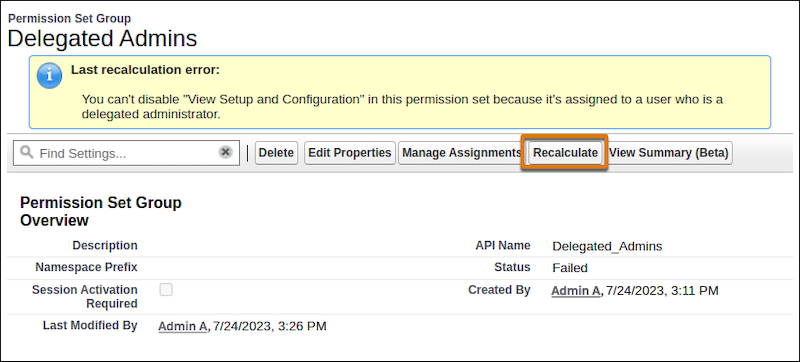
See API Names for Object and Field Permissions in Permission Sets
The Object API Name and Field API Name in addition to the object and field label are now displayed to avoid any confusion when configuring object and field permissions in permission sets.

See How Many Permission Set Groups a Permission Set Is Added To
You can now see a count of how many permission set groups a specific permission set belongs to.
Use this count to identify the impact on your users before making a change to the permission set.
5. Intelligence view: a fresh approach to lead and contact management
This is a very exciting and user-friendly enhancement for lead and contact management.
The Lead Intelligence View and Contact Intelligence View provide a streamlined interface for presenting activity metrics and encouraging user actions, all conveniently accessible on a single page.
Once activated in setup, users can simply choose “Intelligence View” from the lead or contact home page.
Lead metrics included in the new intelligence view include:
- Total Leads: The total number of leads that meet your filter criteria.
- No Activity: Leads with no completed activities.
- Idle: Leads with past activity, but no completed activities in the last 30 days.
- No Upcoming: Leads with recently completed activity but no future activities scheduled.
- Overdue: Leads with activities that are overdue.
- Due Today: Leads with activities due today.
- Upcoming: Leads with activities due in the next 30 days.

Contact metrics included in the new intelligence view include:
- Total Contacts: The total number of contacts that meet your filter criteria.
- No Activity: Contacts with no completed activities.
- Idle: Contacts with past activity, but no completed activities in the last 30 days.
- No Upcoming: Contacts with recently completed activities but no future activities scheduled.
Overdue: Contacts with activities that are overdue. - Due Today: Contacts with activities due today.
- Upcoming: Contacts with activities due in the next 30 days.

6. Improved management of visibility settings with Account sharing
View a user’s access to various Accounts from Manual Shares and Account Teams with Reports
Create a custom report to get a snapshot of the account records that are shared within your organisation and which users or groups have access to these records.
Build these reports with a custom report type on the Account Share object to make managing the security of your accounts easier.
Enable these reports under report types in the quick find box of settings. Then select “Account Share” as the primary object for users to see when building the reports.
View Public Group Members with Reports
Use a Group Member report to easily manage Public Group memberships. See users, roles and other groups that have been added to public groups with this dynamic custom report type.
Create the custom report under “report type” in settings, then by selecting “Group Member” as the primary object. Once deployed, users can select it when building their reports.
Enable Faster Account Sharing Recalculation
Two updates have been released to promote faster account-sharing recalculation:
- Implicit child share records are no longer stored between accounts and their child case and contact records.
- Access will be granted to the cases and records by the system when attempting to access them
- Implicit child share records are no longer stored between accounts and their child opportunity records.
- Access will be granted to the child opportunity when attempting to access them.
Enable in Setup by entering “Release Updates”, then following the testing steps to enable faster account sharing recalculation and finalising by clicking Apply Updates.
7. Refine forecast accuracy with a new user-friendly interface
Forecast Page Refresh
The forecast page has been given a refresh to make the design easier to read and simpler to navigate.
- Updated label for the forecast range setting to explain what you are viewing (1)
- Current period indicator in displayed in the summary view (2)
- Updated icons for easier page navigation (3)
- Highlighting indicates which fields are clickable for more information (4)
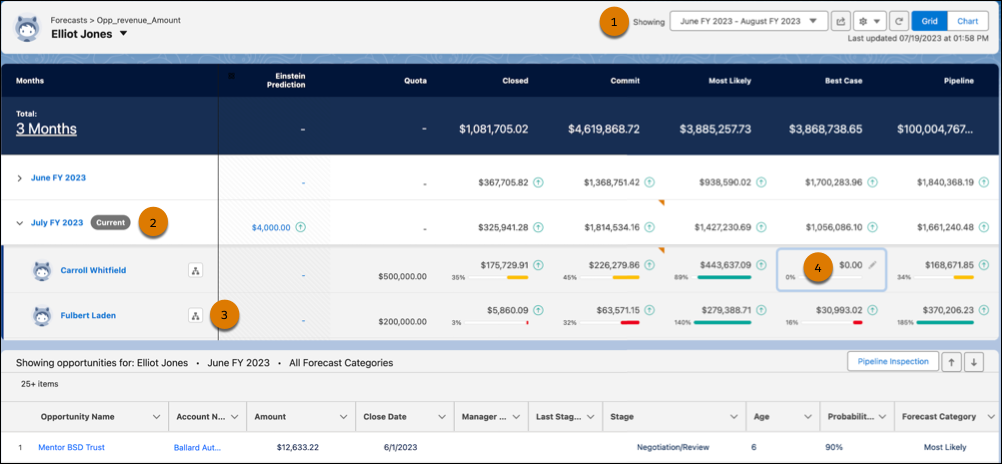
The view has also been simplified when looking at a single month or quarter so duplicates are no longer present in the forecast totals for the period.
Improve Sales Forecast Accuracy with Manager Judgements
Make more accurate and informed forecast adjustments by applying judgements to an opportunity. By doing this, managers can increase their visibility into which deals they have the highest confidence in closing.
This extends the previous functionality where managers could only adjust the committed forecast numbers to see how their judgement influenced the adjusted forecast.
The Manager Judgement column can be added to forecast types based on Opportunity, Opportunity Product, or Line Item Schedule. With this additional column, managers can select whether an opportunity is in or out of the forecast. One restriction however is that forecast managers can’t apply judgements to opportunities that they own, only the forecasts of their team.

Forecast managers can then see the total of the opportunities included in their committed forecast’s comments section, to gain a clear indication of opportunities that are going to close.
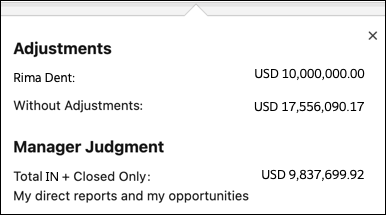
8. Easily recognise opportunity involvement with audit history for Opportunity teams
Splits on opportunities can sometimes create division amongst teams.
With this new feature, you will gain visibility into the changes made to an opportunity through the Audit History tab. You can easily identify who made a change, which field was modified, and view both the current and previous values for opportunity splits using the Audit History feature.
By leveraging this new page view, you can effectively monitor all contributions to opportunities, enabling better management of your operations and resources.
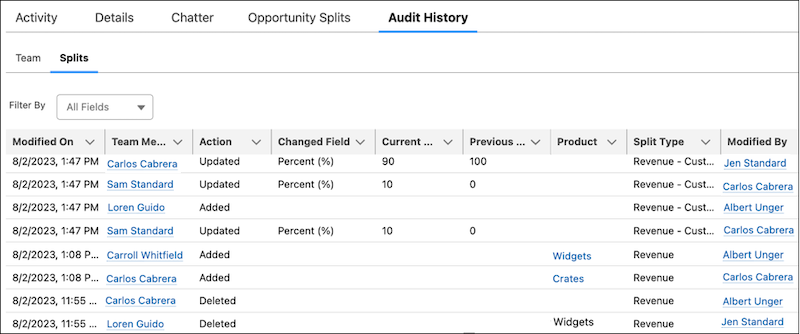
9. Increase Productivity with Generally Available Email Features
New email productivity features that were previously available as an add-on license have now been made generally available to enterprise and professional sales cloud customers.
Users can now use the following email features:
- Send Later
- Email Tracking
- Text Shortcuts
- Email Engagement
If you have these features already as a part of an add-on to your current license, we recommend getting in touch with us to perform a system audit and advise on next steps.
10. Bonus: Evaluate Experience Cloud Site Security with Health Check Settings
New Health Check settings enable users to view the number of objects that guest user profiles have read and edit access to. Identify each user’s visibility allocations to then customise the appropriate visibility settings.
Enter “Health Check” in the Quick Find box and scroll to “Informational Security Settings” object to start evaluating your user’s visibility allocations.
